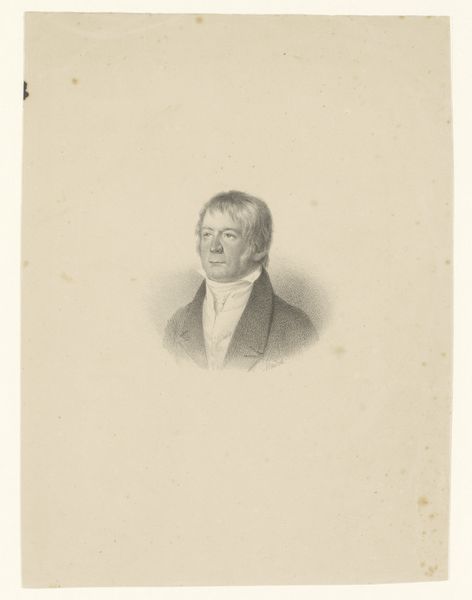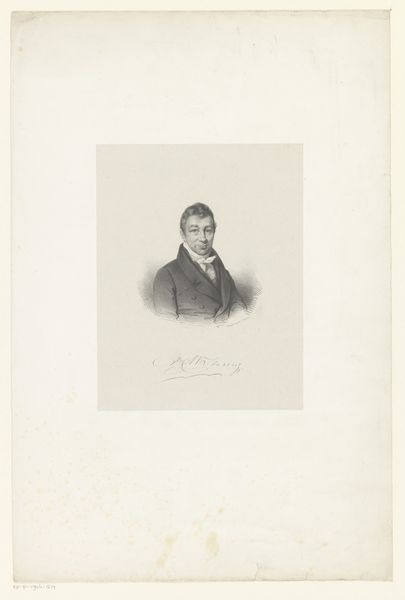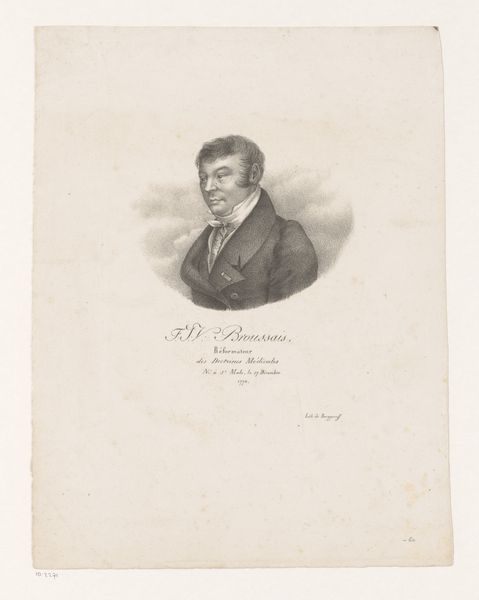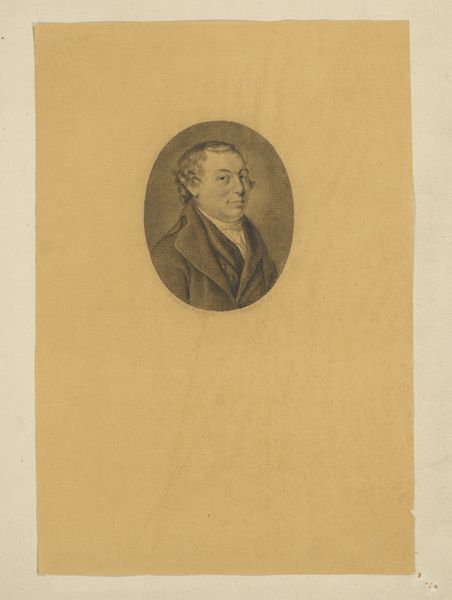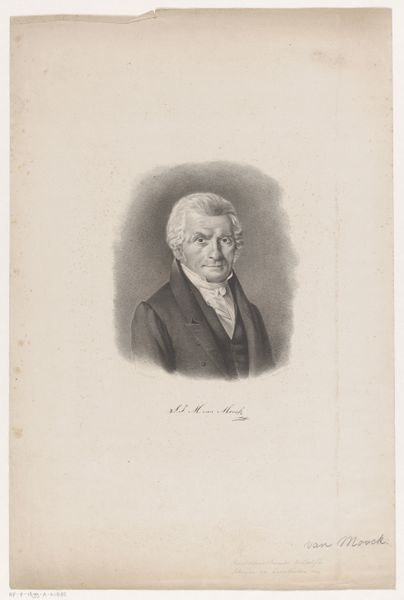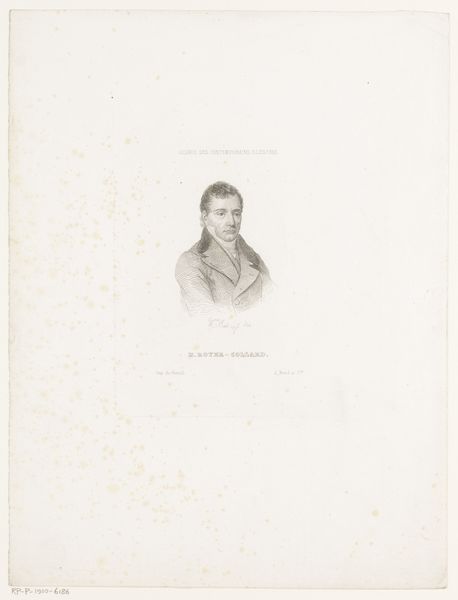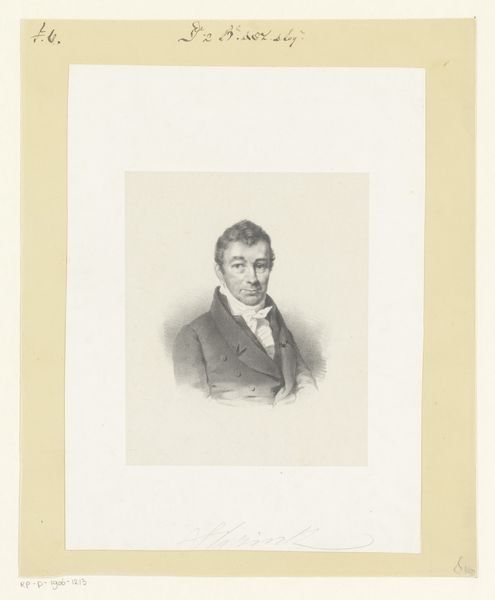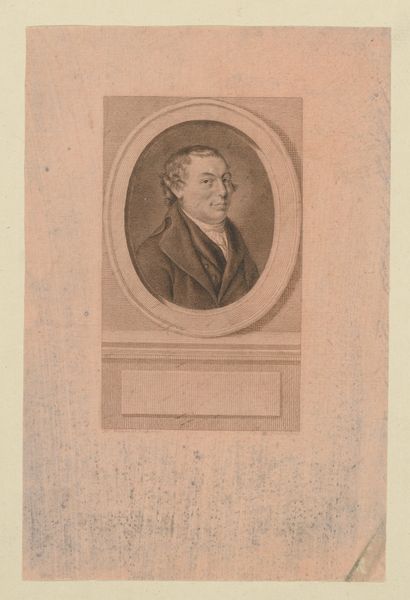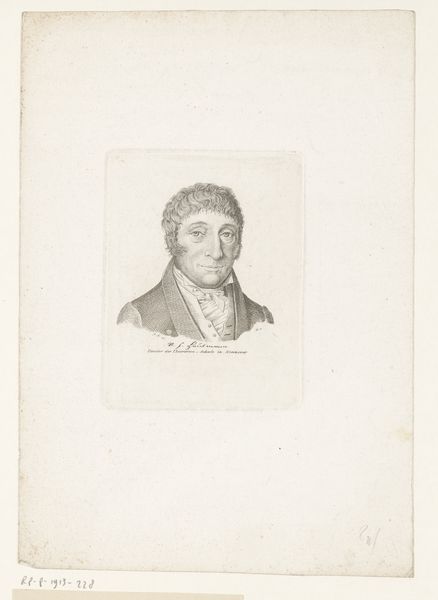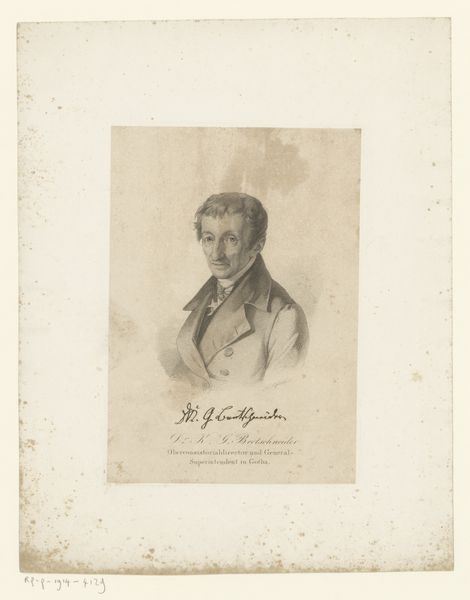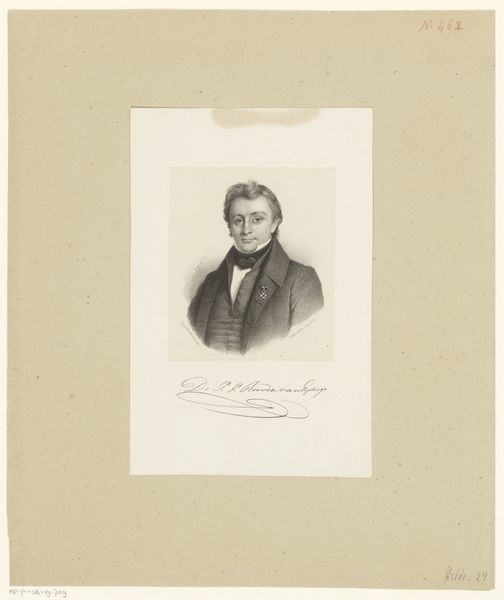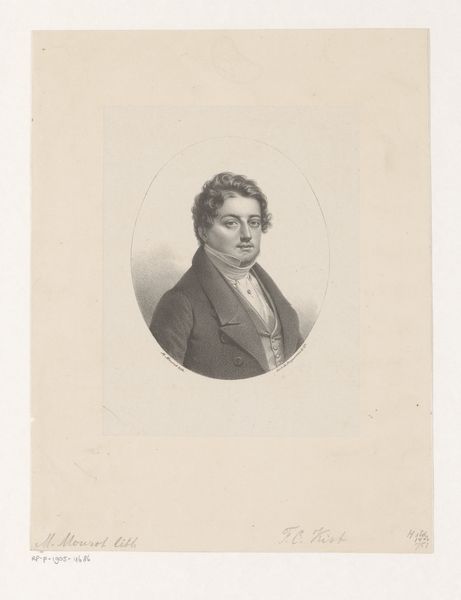
print, engraving
#
portrait
#
pencil drawn
# print
#
pencil sketch
#
old engraving style
#
pencil drawing
#
sketchbook drawing
#
history-painting
#
engraving
Dimensions: height 315 mm, width 244 mm
Copyright: Rijks Museum: Open Domain
Editor: So, this is "Portret van Jacob Hendrik Onderdewijngaart Canzius," an engraving from between 1806 and 1877 by Jean-Baptiste Madou, here at the Rijksmuseum. I'm struck by its classic portrait style. It almost feels like a photograph. What catches your eye? Curator: Well, beyond its aesthetic qualities, I immediately consider the social context. This engraving represents a very particular class and gender dynamic of the time. Portraits like this served as symbols of status and power. Do you see any hints of his class status, in his clothing, or his expression? Editor: Definitely his clothes. He is well dressed. And he does appear somewhat stern. Curator: Exactly. Think about what it meant to have one’s portrait made in this era. It wasn't a casual act. It signified a certain level of societal importance, which was almost exclusively available to white men of a certain means. It perpetuates their dominance in the visual and historical record. We must ask: whose stories are missing? Editor: That's a good point. We have plenty of portraits like this in museums. How should we consider art like this in a more critical way? Curator: By understanding the social and political power structures that created and sustained these types of images. By questioning the narratives they present and seeking out alternative voices and perspectives from the margins of society. Editor: I see what you mean. Looking at it now, I can better appreciate what isn’t being represented as well as what is. Curator: Precisely. And perhaps, by recognizing this, we can work toward a more equitable representation in the future. Editor: Thanks! That shifted my perspective a lot. I'll never see portraits the same way.
Comments
No comments
Be the first to comment and join the conversation on the ultimate creative platform.
